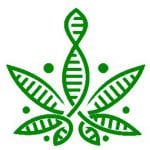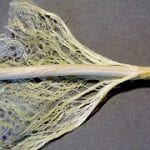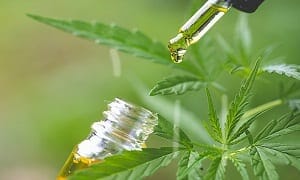If you have been thinking about hemp vs marijuana and what the differences are, 420 Expert Adviser has got you covered! Read the following article to understand the difference.
Cannabis is a variety of flowering plants in the Cannabaceae family, consisting of three essential species: Cannabis Sativa, Cannabis Indica, and Cannabis Ruderalis.
Most people refer to hemp and marijuana as “species” or “strains” of cannabis. They do not qualify as either. In fact, you can not consider them as plants at all!
Hemp and marijuana are simply broad varieties of cannabis that people have adopted into the way of life; however, they are not legitimate terminology for the Cannabis plant.
To simplify the difference between marijuana and hemp and clear the fog on this frequently misinformed subject, let’s explore what hemp and marijuana actually mean and how they differ.
Hemp and Marijuana – What’s the Difference?
Contents
Hemp is an assortment of Cannabis Sativa plant that has less than 0.3% THC. THC is the main psychoactive essence in the plant. Individuals use these strains to make textiles, biodiesel, and nutritional supplements such as CBD.
Marijuana is an ANY cannabis strain with more than 0.3% THC by dried weight. Marijuana can include both Cannabis Sativa and a related species — Cannabis Indica. These strains are used fundamentally for their psychoactive effects.
What is Hemp?
Hemp is a particular type of cannabis that people scientifically know as Cannabis sativa L. Though they are both aspects of the same family and sometimes species, hemp and marijuana have different chemical composition and characteristics.
Hemp plants have low levels of the intoxicating phytocannabinoid that experts identify as Tetrahydrocannabinol (THC), for which marijuana is very popular. It does, however, have high levels of the non-intoxicating phytocannabinoid Cannabidiol (CBD).
In the U.S., the degree of THC is a legal defining line among hemp and marijuana. Users define hemp as Cannabis sativa L. plants, which contain 0.3% THC or less.
People used to consider the plants which exceeding the 0.3% THC limit as marijuana and it remains illegal federally under the U.S. Controlled Substances Act (CSA).
Hemp is known as one of the most versatile plants in the world. You can use the stalk of a hemp plant, for instance, to manufacture of textiles or the advancement of biofuels.
The seeds of hemp are eaten or utilized to make hemp seed oil. Simultaneously, people use the flowers to extract CBD for use in a wide range of products, including skincare products like our Skin Therapy body butter and edibles like our beverage infusions.
What is Marijuana?
If hemp is a cannabis plant containing low THC quantities, then marijuana includes substantially more of the intoxicating compound. Marijuana plants can hold up to 30% THC, making them pretty intense.
Many people use marijuana as a drug, perhaps for ages. The high levels of THC allow it to generate an intoxicating ‘high,’ including effects such as relaxation and euphoria. It is also used medicinally in many states where it is legal to do so.
Marijuana comes in numerous forms, including Sativa and Indica varieties. Each strain has different effects, often depending on whether it is Sativa-dominant or Indica-dominant.
In contrast to hemp, which is always a Sativa, marijuana can be a cross-bred mixture of anything.
Origin of Hemp and Marijuana
The hemp and marijuana origins are very unmistakably intertwined, as they both form part of the same plant family, Cannabis Sativa.

The experts trust that it originated in Central and South Asia, in approximately 10,000 BC. Cannabis had been growing naturally in the jungle for thousands of years before humanity began to study and find out its exceptional properties progressively.
People used all cannabis plants for the same purposes, without distinguishing among hemp and marijuana.
Throughout the long term, humans began to give cannabis plants different uses; plants began being chosen based on specific characteristics. Individuals started using these two types of plants for two different purposes.
People started using the first one for fiber and food, whereas people used to grow the other one to get its psychoactive flowers, which people used in various rituals as a medicinal treatment.
Growing and domesticating cannabis with particular objectives in mind began at around 7000 BC, with an absolute difference among therapeutic and spiritual plants and plants used for fiber.
They still don’t have a scientific name for them, but these plants definitely had a reasonable purpose.
Cannabis plants slowly spread the world over, starting with focal and south Asia – this was most likely because of humanity and not a characteristic expansion or growth, which can sometimes happen in nature.
This is why we would now be able to find cannabis plants, hundreds of years after the fact, grown in European climates such as the Iberian Peninsula.
The Terminology of the Names
It more or less explains the origins of hemp and cannabis, but it didn’t reveal to us when did they get their names and who gave it to them.
A Swiss botanist called Carl Linnaeus was the person who classified cannabis plants for the first run through. He named it Cannabis Sativa L.
The word “cannabis” still creates a bit of doubt when it comes to its origins; numerous cultures and languages have terms similar to cannabis, and it can be difficult to figure out which one it comes from.
The word “Sativa” means grown, and many plant species include this Latin word in their official name. Years after the fact, Jean Baptiste Lamarck discovered what we presently know as Cannabis Indica.
Significant Differences Between Hemp and Marijuana
As classifications of the same plant species, hemp and marijuana share numerous similarities and can even appear exactly the same.
You do not have any wish to get these two confused with contrasting legal regulations and very different effects and usages. To understand how different these two are, examine these key differences among hemp and marijuana.
Hemp vs Marijuana – Genetics
Even though most breeders consider all cannabis plants to belong to the same species, people usually understand them into two varieties: Cannabis Sativa or Cannabis Indica.

Most breeders experienced with cannabis know about this distinction as used it as a basis to describe different strains of weed.
People considered marijuana that was more uplifting or energetic, as a Sativa. Marijuana that was more sedative or relaxing as an Indica. Moreover, most people distinguish these two varieties by their appearance.
Even though this categorization remains famous today, the scientists discharged it. It is the chemical composition of the strain that will determine how it affects you, and the classification of a strain as Indica or Sativa does not go with where the plants developed from.
Interestingly, a report examining the genotypes of 43 hemp samples and 81 marijuana samples identified a consistent difference among hemp and marijuana. Hemp is genetically more like C. Indica and marijuana to C. Sativa.
However, this same study uncovered that marijuana and hemp plants still “share a typical pond of genetic variation.” There are few marijuana strains that are more similar naturally to hemp and visa versa.
This confusing genetic blend is thanks to thousands of years of human travel with cannabis seeds and selective breeding.
Hemp vs Marijuana – Chemical Composition
The main difference between hemp and marijuana is their chemical composition, specifically in tetrahydrocannabinol (THC).

THC is the essence responsible for the psychological effects of marijuana.
An average bunch of marijuana has anywhere from 5-20% THC content. Some high-quality marijuana can have up to 25-30% THC!
Then again, legal hemp has a maximum THC level of 0.3%, essentially making it impossible to sense any psychoactive effect or get a “high” feeling.
This threshold is vigorously regulated in other nations that have legalized hemp. Hemp also has a high ratio of Cannabidiol (CBD), which offers numerous one of a kind benefits.
Hemp vs Marijuana – Cultivation
Other significant differences between hemp and marijuana have to do with cultivation and harvesting.
Male plants flower a lot faster than females and do not produce close to as much fiber. In stark contrast to marijuana farms, most female hemp fields include sporadically placed males.
The male hemp plants release dust for the female plant to provide seeds that will either be utilized for future crops or sold as food.

In the marijuana fields, the breeders eliminate the male plants to ensure the most outstanding production of sinsemilla buds.
While marijuana cultivation requires sufficient spacing to reduce the risk of mold or bacteria, you can plant hemp more densely.
Mostly, growers plant marijuana crops at some distance, keeping one plant per four square feet. The breeders those who plant hemp for oil, plant them at roughly 40 to 60 plants per four square feet.

The farmers, those who plant it for fiber, plant them even more densely at a pace of around 100 to 120 plants per four square feet.
Hemp plants are almost always cultivated outdoors, instead of marijuana plants, which people grow in a greenhouse or indoor conditions.
Because hemp is also susceptible to the same bugs, diseases, and mites that assault marijuana, numerous cultivators utilize a strategy called crop pivot, in which they plant alternating crops in the same place to evade any development of these organisms and to allow nutrients to return to the soil.
The specific order of yield pivot and types of crops that the breeder turn with hemp will rely upon the area of the farm. Growers also use hemp as a rotational yield at farms where it is not an essential agricultural product.
Hemp vs Marijuana – Appearance
Marijuana and hemp look different. When you closely observe their leaves, the leaves of marijuana seem to be broad, with a tight bud or resemble a bud with tiny hairs or crystals.

Hemp leaves, on the other hand, are thin and condensed at the top. Not many branches or leaves exist below the top aspect of the plant.

When you observe the plants from far off, marijuana looks like a short thick bush. Hemp, specially grown for fiber or seeds, is typically skinnier and taller (up to 20 ft).
Sometimes, it almost looks like long ditch weed – many people used to grow it among weeds in Nebraska, Kansas, and numerous other states.
In general, when you contrast a marijuana plantation and those of industrial hemp, you’ll notice that they are very different from each other.
Hemp vs Marijuana – Usage

Marijuana is reasonably limited in its uses. Users can smoke weed recreationally, to get high, or use it medicinally for expected therapeutic benefits. This, of course, relies on the state where you live.

Whereas hemp has countless uses. Before the authorities restricted it, people used the hemp plant’s cellulose-rich fibers to make sails for ships!
As you might probably tell, people used hemp plants in their whole, and they used it to make an incredibly wide range of products, materials, and prescriptions.
It’s one of the most versatile plants that now exist in the world and one of only a handful, not many plants that can be used completely. You don’t have to discard anything from these plants.
Let’s have a quick look at the products list!
Products made out of hemp
- Various kinds of clothes and fabrics: shirts, pants, shoes, curtains, and so forth.
- Construction materials: bricks, thermal insulation, panels, and so on.
- Cosmetics: creams, oils, shampoos, and so on.
- Food: water, hemp oil, hemp seeds, pasta, flour, creature feed, and so on.
- Medicinal CBD products: creams, CBD oils, flowers.
- Industrial materials included in various vehicle and machinery components.
Hemp vs Marijuana – Legality
Before the 1930s, there was no public stigma against the use of cannabis, and people used it in whatever ways they pleased. People used to produce paper, clothing, and rope, as natural medicine, and as a recreational drug.
But in the 1930s, following a pernicious smear campaign, popular opinion began to change. It prompted the passing of the Marihuana Tax Act in 1937, the first legal restriction of cannabis.

In 1970, all cannabis plants and products got illegal under the Controlled Substances Act of 1970.
These restrictions executed cannabis agriculture in the United States. Breeders were not, at that point, ready to cultivate cannabis plants for their fiber or medicinal uses.
The passing of the Farm Bill of 2014 brought the change for hemp plants. It defined hemp plants as those with 0.3 percent or less THC and allowed limited industrial hemp growth and research.
It wasn’t until the initiation of the Farm Bill of 2018, also known as the Agriculture Improvement Act of 2018, that hemp agriculture and products got legal in all 50 states.
This increased legality is mostly to appreciate the fast speeding up in diversity and hemp-inferred CBD oil availability.
Marijuana, on the other end, is still categorized as a Schedule 1 drug. It means that under federal law, any marijuana-inferred product is illegal.
However, states can legalize medical marijuana and recreational marijuana. Hence, individuals who live in certain countries approach the therapeutic benefits of the marijuana plant, while those in other states do not.
Hemp-Derived CBD vs Marijuana Derived CBD – Which one to Choose?
Both hemp and marijuana produce Cannabidiol. It appears in a lot higher quantities in hemp, though.

Technically, a CBD-infused oil produced from marijuana would be called a ‘cannabis oil,’ as it contains a high measure of THC as well.
Generally, users select hemp-derived CBD. CBD from industrial hemp, containing less than 0.3% THC, has been eliminated from the Controlled Substances Act.
Although each state has slightly different laws, people have acknowledged and used hemp-derived CBD broadly.
It is possible to use marijuana-inferred CBD if you live in a legal state. Dispensaries, both medical and recreational, sometimes stock marijuana-derived CBD oils.
However, to access this, you should be a grown-up residing in one of these states and possibly get a practicing physician’s recommendation.
Last Thoughts:
Although hemp and marijuana are the two members of the cannabis species, they are very different.
Anyone can get confused between these two, especially going on appearance alone. However, it is presently more important to learn the difference in the present time.
We hope that this information would help you understand the difference between hemp and marijuana.

